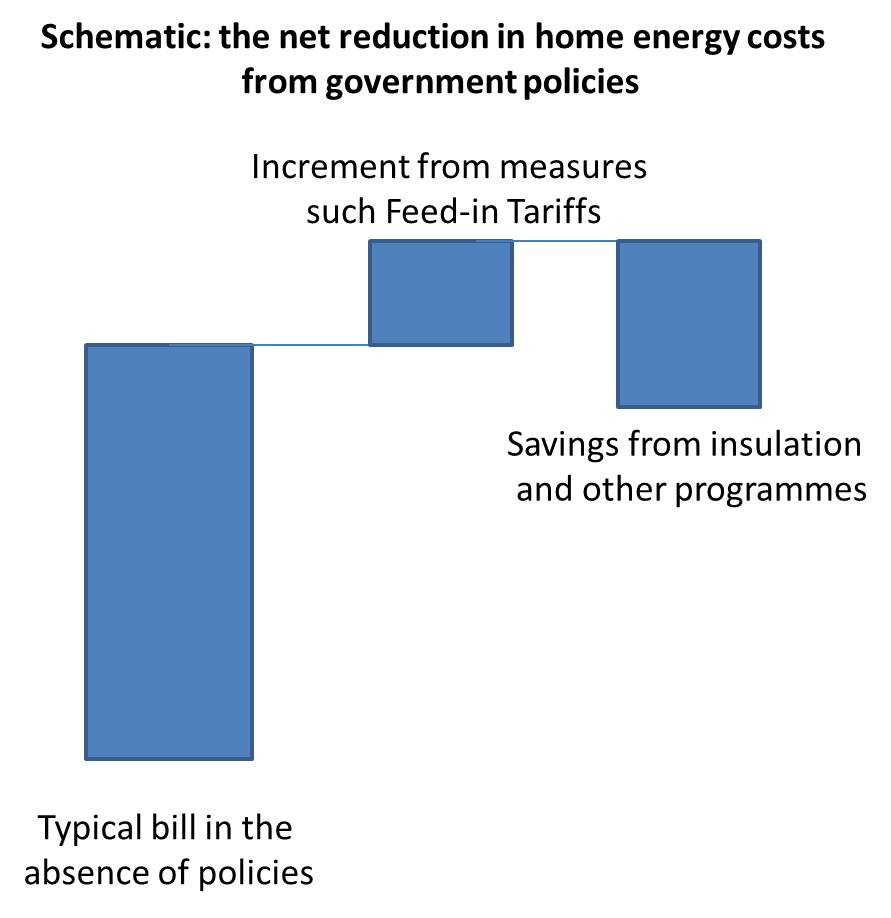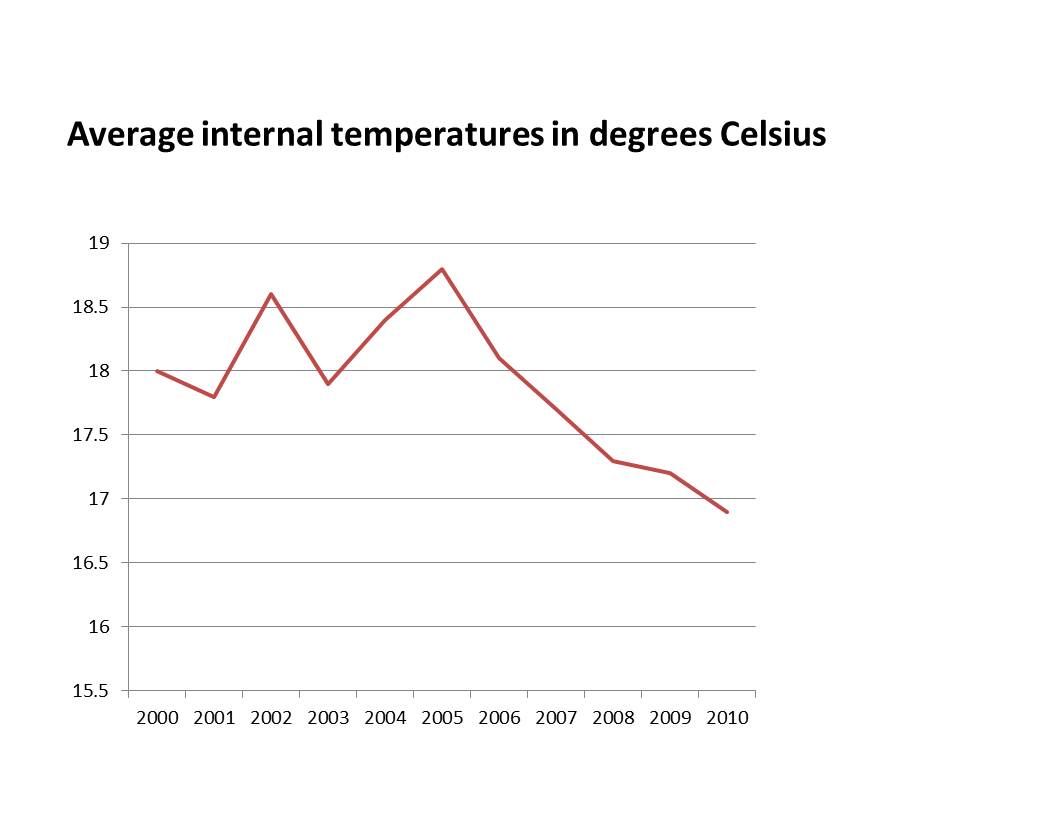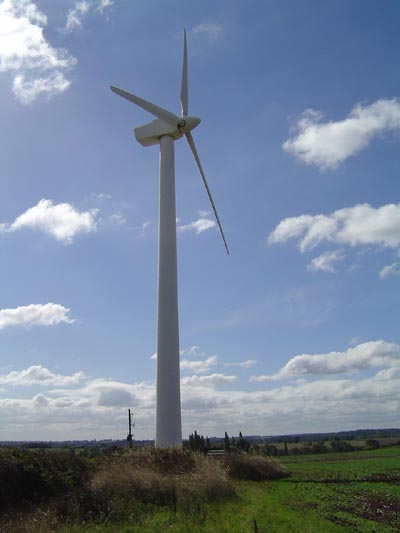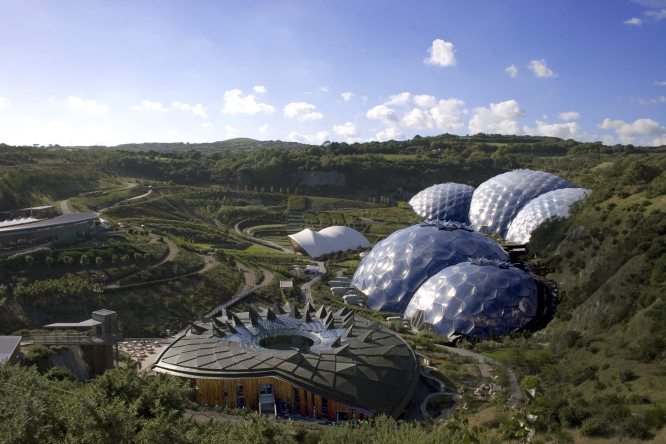 In Sustainability: All That Matters I write that the world faces two particularly difficult challenges; the urgent requirement to reduce fossil fuel use and the need to stop global deforestation. Land use changes, including the loss of wooded lands to agriculture, are responsible for almost 20% of carbon emissions to the atmosphere. A recent paper, entitled Peak Farmland and the Prospect for Land Sparing, suggests that my concern over the conversion of forest to agricultural land is misplaced. The distinguished authors of this new paper assert that the global acreage given over to cropland has reached a peak and will now fall steadily, implying that carbon emissions from deforestation may now fall sharply. Is their optimism justified? In my opinion, no.
In Sustainability: All That Matters I write that the world faces two particularly difficult challenges; the urgent requirement to reduce fossil fuel use and the need to stop global deforestation. Land use changes, including the loss of wooded lands to agriculture, are responsible for almost 20% of carbon emissions to the atmosphere. A recent paper, entitled Peak Farmland and the Prospect for Land Sparing, suggests that my concern over the conversion of forest to agricultural land is misplaced. The distinguished authors of this new paper assert that the global acreage given over to cropland has reached a peak and will now fall steadily, implying that carbon emissions from deforestation may now fall sharply. Is their optimism justified? In my opinion, no.
I believe that their paper substantially overstates likely future growth in agricultural yields, meaning that world population growth between now and 2050 will require a continued substantial expansion in global farmland, not the reduction that they project. This may seem a technical or abstruse issue. It is not: humanity needs to stabilise the percentage of the earth given over to farming – already 12% of land area - in order that the rest of the surface can perform the vital functions of carbon sequestration and biodiversity maintenance.
The forces that determine the amount of land required for farming
The amount of land needed to feed the world is driven by five separate forces. These are
- The size of the global population. As the number of people rises, the land needed to feed them increases.
- The average calorific intake of the population. More food per person requires more land to grow it on.
- The percentage of all agricultural output that finds its way into human diet. Crops grown for biofuels are turned into motor and aviation fuel. These crops use agricultural land but do not feed people (although the residues of maize and wheat that remain after the starch in the grain has been converted to ethanol provide nutritious animal feed). More important than biofuels, a large portion of all agricultural land grows food that is used for the diet of meat animals. The conversion process is inefficient: it requires at least seven calories of grain to create one calorie of beef. The greater percentage of meat in the global diet, the more agricultural land that is needed.
- The mix of foods grown. A hectare of productive land growing wheat will produce more calories than acre of strawberries.
- Lastly, and most importantly, the yield of individual crops, expressed in tonnes per hectare.
Today’s typical global citizen has access to over 2,700 calories a day. (The actual amount produced is over 5,300 calories a day per head, but much of this food is fed to animals). The number of calories per head available as food has increased reasonably steadily over recent decades because the rate of population growth, compounded by the increase in average meat intake and the switch to more varied diet, has been more than counterbalanced by the forces adding to food production. These have been the robust and remarkably consistent growth in average yields per hectare and, less happily, the substantial increase in the land area given over to cropland. The destruction of the Amazon rainforest and the rapid loss of equally important forests in Indonesia and other Asian countries has been primarily been caused by the demand for more agricultural land on which to grow such crops as soya for cattle feed and palm oil for biofuels.
The task taken on by the authors of ‘Peak Farming’.
Jesse Ausubel and his colleagues produce an estimate of the likely evolution of each of the five forces listed in the previous section and the net impact on the demand for cropland. In summary, they conclude as follows.
- Population. Their central estimate is that the world’s population will grow at 0.9% per year to 2050.
- Average calorific intake. They assume an increase of 0.2% per year. This growth is concentrated in developing countries of course. The richest states will see a flattening or reduction. (I argued in Peak Stuff that average UK calorific intake has been falling for a generation and shows no signs of changing direction).
- Their paper merges the forces 3 and 4 into one. It proposes a figure of 0.4% p.a. as the yearly increment to food production necessary just to provide for increased biofuels output, greater diversion of food to meat animals and increased production of low nutritional value foods, including such crops such as coffee and other stimulants.
- (Combined with 3 above)
- Yield per hectare. Ausubel and his colleagues suggest that the average yield per hectare will continue to grow rapidly for the next forty or so years. They look for average increases of 1.7% a year across the period.
Source of reduced global demand for farmland as proposed by Ausubel et al
(Percentage increase per year 2007/2050)

Source: Jesse H Ausubel et al, Peak Farmland and the Prospects for Land Sparing, 2012
Taken together, these five forces suggest that world nutrition will be provided by the output of fewer and fewer hectares of farmland. The authors’ central estimate is that the cropped area will consistently decline by about 0.2% a year. This implies that farmland hectares will decrease by almost 10% from today’s levels down to about 1,400 million hectares in 2050, almost completely reversing the increase since 1960.
This conclusion was greeted enthusiastically by free-market proponents such as Matt Ridley in the Wall Street Journal and by the Freakonomics blog. To these commentators no doubt the results of the research seemed another welcome instance of environmental problems being cured, rather than worsened, by the progress of humanity.
Ausubel and colleagues alos provided some sensitivities to their central forecast. One optimistic projection suggest a further decrease of more than 250 million hectares as a result of less rapid population growth than expected or the abandonment of the use of food for biofuels. Since the world currently uses about 1,600 million hectares of land for agriculture, these changes are very substantial.
The problems with ‘Peak Farming’
At some point in the future, the need for farmland will indeed probably peak. Population growth will fall to about zero, perhaps as early as mid-century. Almost all humankind will have access to sufficient calories for satiation, the diversion of increasing volumes into grain into animal feed will cease as the amount of meat in diets ceases to grow and agricultural yields will continue to edge upwards. (However, even if these forces operate favourably, Peak Farmland will still be dependent on a reversal of the almost universally condemned policy of turning large quantities of food into vehicle fuels.)
But the decline in the area of farmland needed to provide human nutrition is probably still some way off, perhaps half a century in the future. The central reason is that Ausubel and colleagues probably substantially overestimate the likely evolution of crop yields over the next decades. Instead of the 1.7% annual increase that they project every year to 2050, a figure of about 0.8% is a much more reasonable central estimate.
What is the source for the figure of 1.7% yearly yield increase as forecast by Ausubel et al? The paper refers to a joint OECD/FAO note from 2011 that provides some forecasts for global agriculture and suggests an annual increase of total production of 1.7% until 2021. It does not deal with years beyond this date.
Unfortunately I think Ausubel et al make two errors in using this figure as the basis for their forecast to 2050. First, the OECD/FAO projection covers the nine year period between 2012 and 2021 and makes no forecasts whatsoever for 2050. The rate of increase in global agricultural yields has been dropping rapidly in recent decades and there is no reason for this deceleration to come to an end. Any estimates of yield increases out to 2050 should therefore be very much lower than figures intended only to cover the period to 2021. Second, I believe that the OECD/FAO figure of 1.7% is an estimate of the expected increase in total agricultural production not the increase in average yield per hectare. The estimate of gain in total production includes an element arising from additional agricultural land. This apparent mistake is less important than the first error because the OECD/FAO is only expecting agricultural land to increase by about 0.1% per year during the decade from 2011 to 2020.
What estimate of yield increase should Ausubel et al have used? In my opinion, the most complete and up-to-date forecasts are provided by Alexandratos and Bruinsma (AB) in a FAO document produced in the middle of 2012. Unlike the OECD/FAO study, AB examine the prospects for yield for each individual major crop in each type of agricultural region. They conclude that the best estimate for the growth rate of yields to 2050 across all crops and geographic areas is 0.8% per year. Very surprisingly, the Ausubel paper make reference to their document but does not discuss – even cursorily - the reasons why their figure of 1.7% annual increase in yields is so different to the much lower forecast from the larger and very much more detailed study of Alexandratos and Bruinsma. [1]
A chart taken from Alexandratos and Bruinsma makes the reason for relative pessimism about long term yield growth clear. The rate of increase in tonnage per hectare for the major cereal crops is shown below.
Twenty five year rolling estimates of annual yield increases

Source: Nikos Alexandratos and Jelle Bruinsma, World Agriculture Towards 2030/2050, 2012
The average growth in yields of cereals in the twenty five years to 1985 was about 2.5% per year, falling to about 1.8% in 1995 and 1.5% in 2005. (Cereals provide almost 50% of global calories – yield increases in these crops have provided a large part of worldwide nutrition gains over the past two generations).The paper projects wheat yield increases falling to 0.86% annually over the period to 2050, rice increasing 0.63% and maize 0.83% per annum. These numbers combine to make Ausubel’s figure of 1.7% yield growth look extremely optimistic indeed: their forecast for 2007-2050 wasn’t even achieved for cereals in the 25 year period to 2007.
The AB paper also provides estimates (sometimes indirectly) for the other four forces that combine to drive the degree of expansion or contraction in agricultural land between now and 2050.
- Population growth is expected to be lower than Ausubel expects. The latest forecast from the UN is for annual increases of about 0.7% compared to the 0.9% figure he and his co-authors use.
- Average calorific intake per person is expected to rise by about 0.2% in both papers.
- (and 4). The switch in food production towards meat and toward biofuel use, as well as the change in mix of foods grown is expected to add less than 0.1% to agricultural production needs, compared to 0.4% per annum in the Ausubel paper.
Combine all these forecasts and the world still appears to need to add to the land area given over to arable agriculture. The net increment is only 0.1% per year but this means that another 69 million hectares will be needed by 2050, adding over 4% to the total area under some form of cultivation.
Implied change in global area devoted to cropland from Alexandratos and Bruinsma FAO study, 2012
(Percentage increase per year 2007 to 2050)

Source: Nikos Alexandratos and Jelle Bruinsma, World Agriculture Towards 2030/2050, 2012
All these extra hectares will be in developing countries. As has been the case since the 1980s, the developed world will continue to slowly reduce the land area given over to agriculture. Most developing countries are in the tropical regions and a hectare lost to forest in the tropics is far more important for carbon sequestration than a hectare gained in regions where trees grow slowly.
Finally, it is worth pointing one of the crucial expectations underlying the Alexandratos and Bruinsma forecast. Their predictions are based on an assumption that the number of agricultural hectares used for biofuel production rises to 2020 but then remains unchanged. This may be a correct view but the world’s political systems are surprisingly unimpressed by the growing chorus across the ideological spectrum that making biofuels from food is a thoroughly bad idea. The reality of the 2020s and beyond may be a continued conversion of forest to farmland as food-based biofuels continue to grow in importance.
‘Peak Farmland’ will happen sometime. The worry is that it will take another half century, and by then the climate change consequences of decreasing forest size will have resulted in increased drought, flood and excess temperatures. Ausubel and his colleagues praise the sustained increase in US maize (corn) yields in the past half century up to 2011. Perhaps they should also have mentioned the impact of the drought in 2012? Who knows whether the strikingly unusual scarcity of rainfall across most of the US is a consequence of climate change. But what we do know is that 2012 corn yields were the lowest in almost a decade. If productivity around the world is consistently affected by similar disasters in the future we can be unhappily confident that all Ausubel’s predictions about land sparing are going to be mistaken.
[1] A increase of 1.7% between 2011 and 2050 would add 96% to the initial figure, almost doubling initial yields . A growth rate of 0.8% between these years would add less than 38% to output per hectare. The difference between the two figures is thus of extremely high significance.
 The community micro hydro scheme at Osney, near the centre of Oxford, has reached its target of £250,000 investment from local shareholders within ten days of starting its fund-raising. Work commences on a 49 kW Archimedes screw at a weir on the River Thames in a few weeks’ time. The target return offered to investors is only 4%. This is more proof that community renewable energy projects can raise money locally at rates well below the cost of bank finance. Many congratulations to the team that have been working on this complex project for several years. And praise to the Environment Agency for making it possible – here and around the country – to develop well-designed river micro hydro.
The Osney weir
The community micro hydro scheme at Osney, near the centre of Oxford, has reached its target of £250,000 investment from local shareholders within ten days of starting its fund-raising. Work commences on a 49 kW Archimedes screw at a weir on the River Thames in a few weeks’ time. The target return offered to investors is only 4%. This is more proof that community renewable energy projects can raise money locally at rates well below the cost of bank finance. Many congratulations to the team that have been working on this complex project for several years. And praise to the Environment Agency for making it possible – here and around the country – to develop well-designed river micro hydro.
The Osney weir  is an expensive project for the electricity it hopes to generate. The full cost is around £600,000 for the 49 kW output with bank debt covering the £350,000 not raised in the share issue. The cost per kilowatt is therefore over £12,000, more than the £8-£10,000 that I estimate for the easiest locations. (Compare this to the price of about £500 a kilowatt for new large power stations using gas as their fuel). Based on five years flow data on the Thames, the output from the Archimedes screw is projected at around 159,000 kWh a year, a capacity factor of around 37%, which is a decent figure for a lowland site.
is an expensive project for the electricity it hopes to generate. The full cost is around £600,000 for the 49 kW output with bank debt covering the £350,000 not raised in the share issue. The cost per kilowatt is therefore over £12,000, more than the £8-£10,000 that I estimate for the easiest locations. (Compare this to the price of about £500 a kilowatt for new large power stations using gas as their fuel). Based on five years flow data on the Thames, the output from the Archimedes screw is projected at around 159,000 kWh a year, a capacity factor of around 37%, which is a decent figure for a lowland site.




















